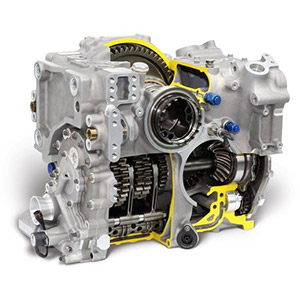R&D Tax Credit News

Illinois Extends R&D Tax Credit and Creates New Apprenticeship Credit
December 11, 2019
In August, Illinois Governor J.B. Pritzker signed SB 1591 extending the Illinois R&D tax credit for an additional 5 years, through 2026. The current R&D tax credit was due to expire at the end of 2021. Since the credit was introduced by Governor Jim Edger in 1990, the program has been allowed to sunset over and over again limiting business owner’s ability to plan ahead for R&D investments.
SB 1591 also created a new apprenticeship tax credit for companies investing in Related Technical Instruction (RTI) for their apprentices. Commonly, RTI is provided by community colleges. This tax credit will help offset some of the tuition expense paid by the employer. The new law provides a $3,500 income tax credit for educational costs paid to a community college on behalf of an apprentice.
How the Illinois R&D Tax Credit Works
The current version of the credit allows a 6.5% credit on increases in R&D spending that occur within the state. For example, if a company invested $200,000 last year and invests $400,000 this year, the credit generated on the additional $200,000 R&D expenditure would be $13,000.
Companies from any industry can benefit from the Illinois R&D credit, if the expenditures occur within the state and the activities meet the Federal definitions for qualified activities.
Federal legislation describes the exact set of criteria that activities must pass to be eligible for the credit. This is commonly called the four-part test (outlined in Treasury Regulations Sec. 1-41.4):
- Technological in Nature– Activities you perform must be based on the “hard sciences” such as physics, engineering, computer sciences, biology and chemistry.
- Technological Uncertainty– You are performing your development activities to uncover information you don’t already know, creating uncertainty as to the appropriate method, design, or capability related to your product, process or software.
- Process of Experimentation– Your activities require a process of theoretical and/or physical evaluation that can result in the development of design alternatives.
- Permitted Purpose– The goal of your activity must be to create new or improve the function, performance, reliability or quality of a product, process or software.
Once a company determines the project or activities meet the above 4-part test, expenses related to the wages, supplies and contract research costs can be aggregated as a qualifying research expense and used to generate a credit.
How do I get R&D credits?
If you think that you’re eligible for R&D credits, you need to incorporate these credits as part of your business’ success strategy. The federal R&D credit is claimed using one of three existing calculation methods.
Use our R&D tax credit calculator to get an estimate of what your credit could be.
Regardless of which method you choose (or are required to use), or which state you are in, the process for claiming the credits on your tax returns will look similar to the following:
- Identify your eligible projects or activities (i.e. projects/activities that pass the four-part test above)
- Collect engineering documentation demonstrating that the activities you performed do, in fact, pass the four-part test.
- Gather the costs associated with those eligible activities: wages, materials, subcontractors and consultants.
- Calculate the R&D credits as described in Sec. 41 of the Internal Revenue Code
- Incorporate the credit calculation into your corporate tax return before filing
Make sure you keep the worksheets used to calculate the credits and the supporting engineering documentation. These will be vital to fend off a challenge by the IRS or state revenue departments should you get audited.
Get the experts to do the work for you
If you are investing in product development or manufacturing process improvements your investments likely qualify for R&D credits. Leaving these valuable dollars on the table is overlooking a major source of funds to enable further R&D investment. Having an expert in your corner maximizes your dollars and minimizes your stress.
R&D credit experts can guide you through the process and handle most of it on your behalf, from identifying eligible activities to defending your credit in the case of an audit.
Contact us to chat about the R&D credits and other tax incentives. While every business is unique, our engineers know exactly where to look for every eligible cent.
Featured Projects





